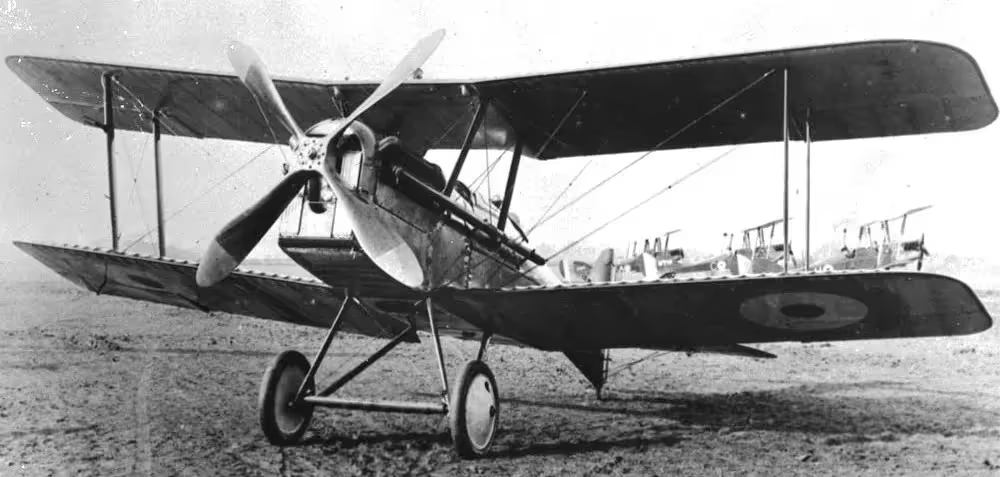Canadian Warplanes 1: Royal Aircraft Factory S.E.5a
Royal Aircraft Factory S.E.5a

(Library and Archives Canada Photo, MIKAN No. 3390895)
Royal Aircraft Factory S.E.5a.
The Royal Aircraft Factory S.E.5 is a British biplane fighter aircraft of the First World War. It was developed at the Royal Aircraft Factory by a team consisting of Henry Folland, John Kenworthy and Major Frank Goodden. It was one of the fastest aircraft of the war, while being both stable and relatively manoeuvrable. According to aviation author Robert Jackson, the S.E.5 was: "the nimble fighter that has since been described as the 'Spitfire of the First World War".
In most respects the S.E.5 had superior performance to the rival Sopwith Camel, although it was less immediately responsive to the controls. Problems with its Hispano-Suiza engine, particularly the geared-output H-S 8B-powered early versions, meant that there was a chronic shortage of the type until well into 1918. Thus, while the first examples had reached the Western Front before the Camel, there were fewer squadrons equipped with the S.E.5 than with the Sopwith fighter.
Together with the Camel, the S.E.5 was instrumental in regaining allied air superiority in mid-1917 and maintaining it for the rest of the war, ensuring there was no repetition of "Bloody April" 1917 when losses in the Royal Flying Corps were much heavier than in the Luftstreitkräfte. The S.E.5s remained in RAF service for some time following the Armistice that ended the conflict; some were transferred to various overseas military operators, while a number were also adopted by civilian operators. (Wikipedia)

(Library and Archives Canada Photo, MIKAN No. 3388495)
Royal Aircraft Factory S.E.5a.

(Library and Archives Canada Photo, MIKAN No. 3523023)
Royal Aircraft Factory S.E.5a, No. 1 Fighting Squadron, Canadian Air Force, Upper Hayford, UK, 1919, flown by Capt Albert Debrisay Carter, DSO & Bar, Belgian Croix de Guerre, from Moncton, New Brunswick. He also flew the SPAD VII and Sopwith 5F.1 Dolphin, and had 27 kills before he was shot down and captured. He died while flying a captured German D.VII (Serial No. 84422/18), in England on 22 May 1919.

(Library and Archives Canada Photo, MIKAN No. 3390924)
Royal Aircraft Factory S.E.5a, Canadian Air Force Capt W.B. Lawson, OC, No. 2 Fighting Squadron, CAF, Upper Heyford, UK, 1919.

(Library and Archives Canada Photo, MIKAN No. 3390899)
Royal Aircraft Factory S.E.5a (Serial 6194), RAF, 1918. D6194, was flown by Captain Francis Ryan 'Frank' Smith while with No. 2 Squadron of the Australian Flying Corps. On the 10th of November 1918, he was shot down by ground fire behind German lines but wasn't captured. He ended the war with 16 victories. (Chris Charland)





